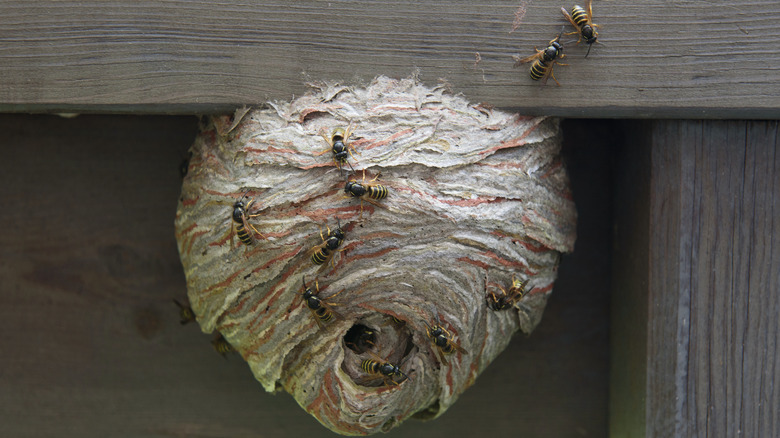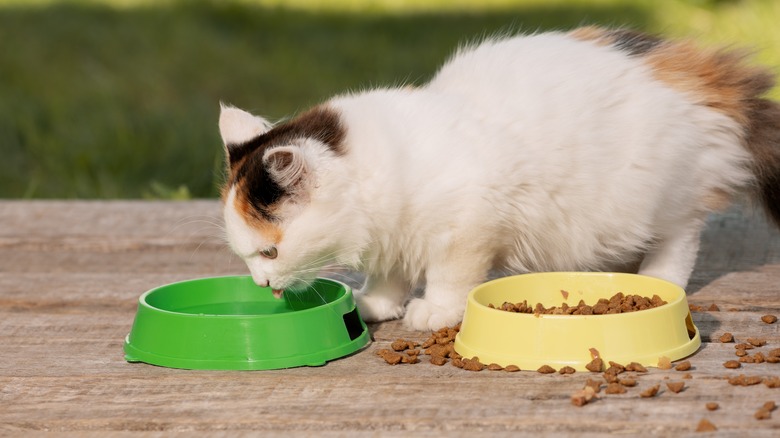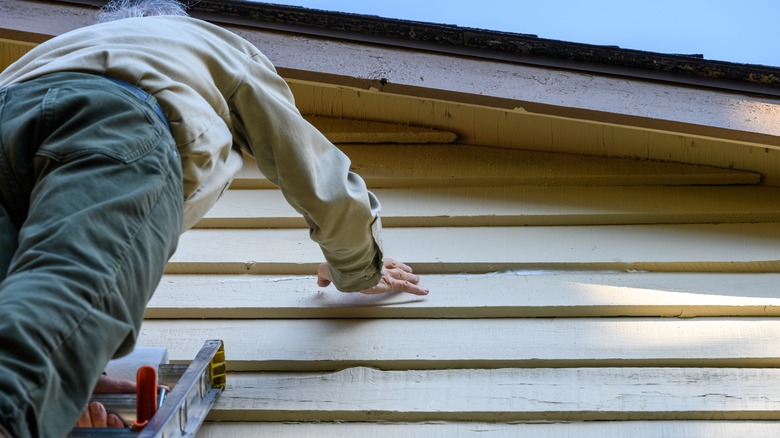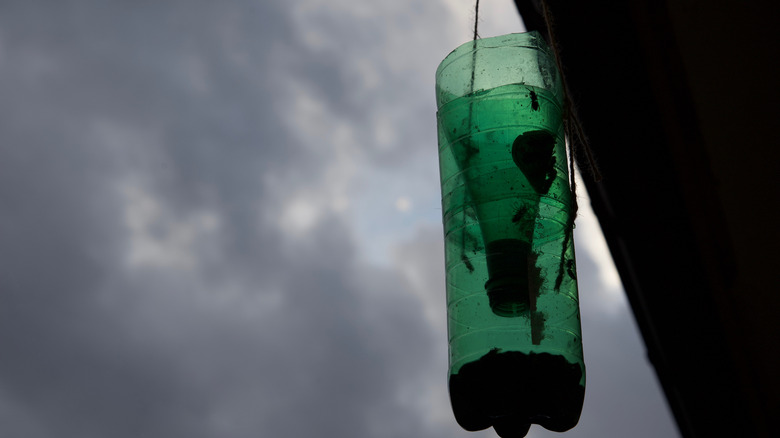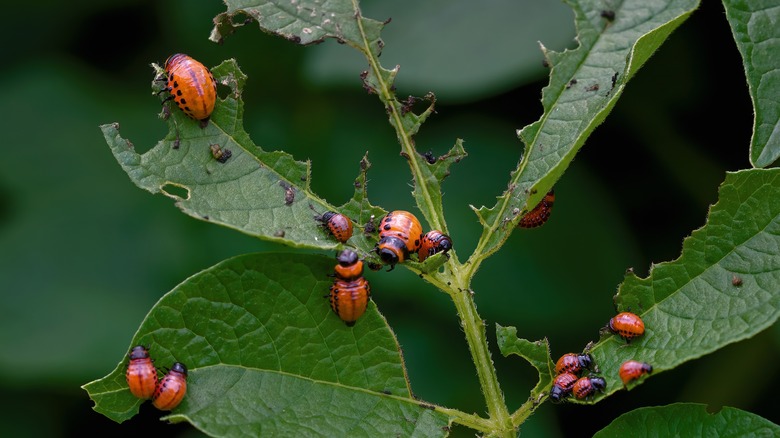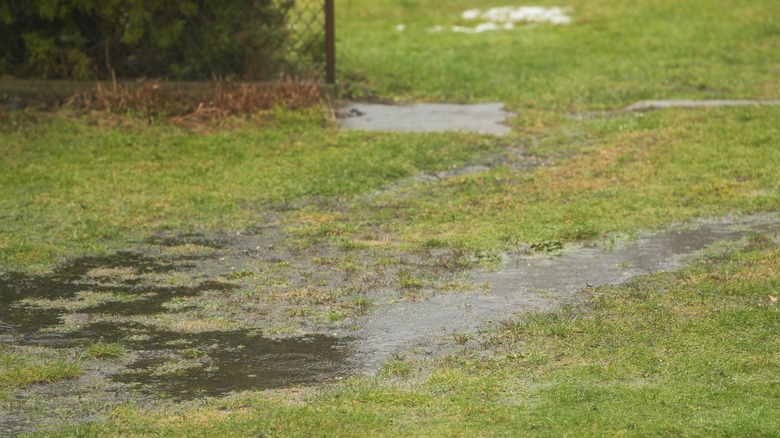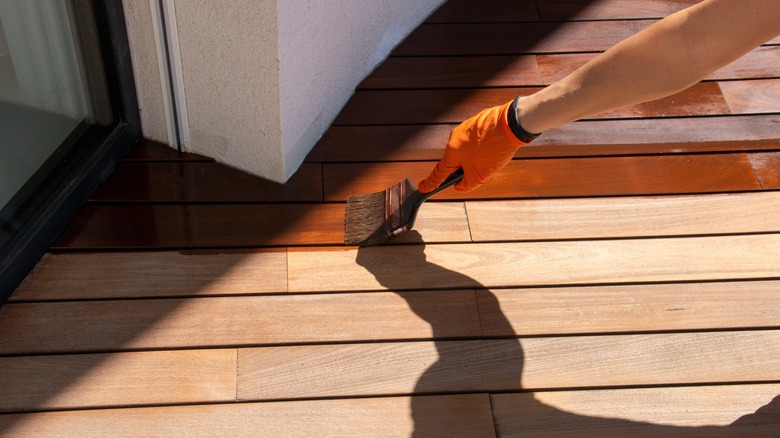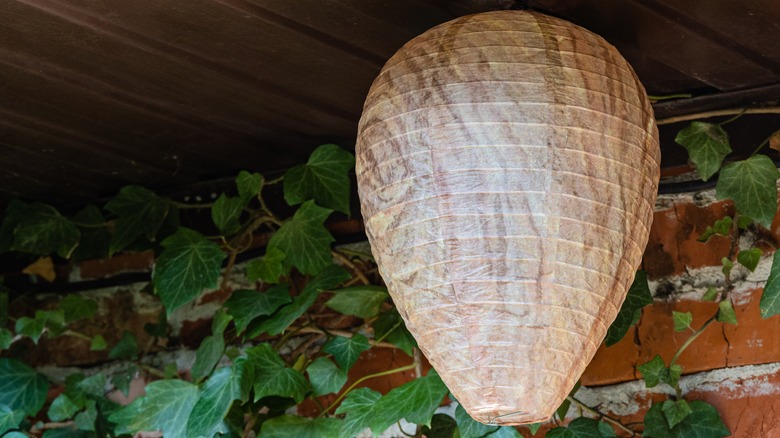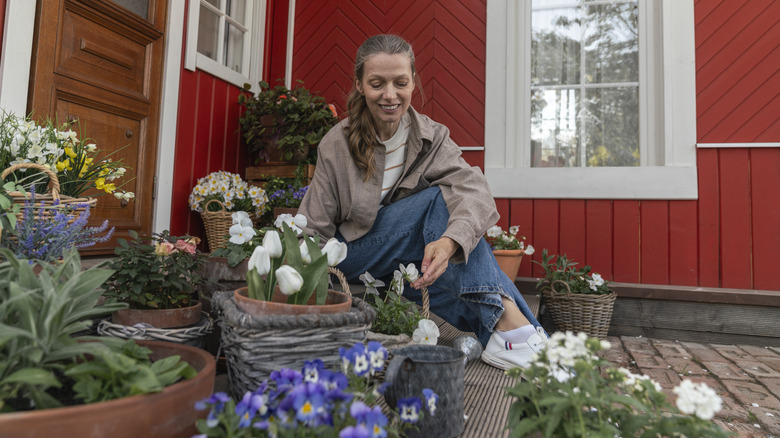7 Ways To Prevent Wasps From Building Nests Near Your Home (& 2 To Avoid)
Wasps are more than an annoying nuisance. They can actually pose serious risks to both your person and your property. A sting from a wasp is very painful, and for those who are allergic, it could cause swelling or problems with breathing. If you're lucky, you might get away with a single jab, but there's also the risk of being swarmed. When they feel threatened, wasps release a pheromone that alerts their fellow hive members to the danger and sends the signal to attack. If this isn't enough, a growing colony of wasps can also damage your home as they chew through wood to craft their nest.
If you're worried about wasps building nests around your home, there are a few techniques you can use to deter them, such as removing food sources and standing water. This can be especially helpful if you live somewhere where wasps are common, such as by the woods. If you want to keep these dangerous pests away, here are some tips and tricks to discourage them from making a home on your property.
Remove any tempting sources of food
If food sources are drawing wasps to your outdoor areas, they're more likely to deem it a suitable place to build their nest. For this reason, taking steps to remove any sources of food that could attract the wasps may help keep them from settling in. Unfortunately, wasps are not solely attracted to one type of item, so you might have your work cut out for you if you want to remove as much temptation as possible.
For example, wasps are attracted to sweet and sugary foods or even meats (which they eat to get protein). Keeping your back and front yard free of any of these items is key. In addition, make sure all trash is in sealed bags and a covered trash can with a secure-fitting lid. Consider moving the container a bit away from the home for added measure. If you feed pets outdoors, you may want to transition to feeding them inside (remember, pet foods are made using meat, so they have high protein levels, which might attract the wasps).
Like other pollinators, wasps are also attracted to bright colors and flowers. While we wouldn't recommend stripping your yard of blooming plants (which sounds depressing and probably won't solve your wasp problem), be careful with where you position flowering species in your garden. Keeping them away from doors, decks, patios, and high-traffic areas where you or others are most likely to spend time can help protect you from stings.
Seal entry points to keep wasps out
A wasp's nest outside of your home is bad enough. But, you certainly don't want the pests to get inside and build their nests within the structure of your house. If there are any openings that will provide access to your home, the wasps will find them. Attics and wall cavities are some of the sneaky spots where wasps build nests. You'll want to take steps to seal any potential entry points to keep them — and other pests — out. Start by examining your siding to look for cracks or gaps. To seal these gaps, try using expanding foam, such as the Great Stuff Smart Dispenser Gaps & Cracks, or waterproof caulk, such as the Gorilla Waterproof Caulk & Seal Silicone Sealant.
You'll also want to assess the rest of your house, including the roof and windows, to look for other potential entry points. If you're not comfortable getting up on your roof, consider hiring a professional roofing company to inspect for you. While the professional is up there, install a new chimney cap, like the Hy-Guard Galvanized Steel Chimney Cover, and a top-sealing damper to prevent wasps and other insects from getting in through the chimney or flue. Aim to complete all of these home improvements by the end of the winter, cutting off the queen's ability to enter your home and begin laying eggs in the spring. This is critical, as it's not advisable to seal up entry points after wasps have already established a nest. Cutting off their exit to the outside could cause these unwanted "tenants" to chew their way through drywall, angrily emerging into a living space.
Set up a few wasp traps around your home
With the right timing and the right type of trap, you may be able to prevent wasps from creating a nest around your home. Yellowjackets, hornets, and paper wasps are attracted to heptyl butyrate, a chemical often added to commercially available wasp traps. However, in order for such traps to be effective at preventing, instead of just controlling, an infestation, they must be placed at the right time of the year.
Aim to get these set up before the end of April, as this is when queen wasps search for protein sources and materials to construct their nest. Trapping the queen will stop them from being able to follow through with nesting — and laying eggs — preventing an infestation of 200 or more of these aggressive pests. During the summer, traps can still capture a few wasps and remove the individual threat they pose. If you'd prefer to DIY a wasp trap, you can add some meat as bait. Just note that you'll want to replace the protein (or the entire trap) as it rots and begins to smell. That's because only fresh meat will attract them. Situate your traps well away from your patio or other outdoor areas you tend to spend a lot of time in.
Make sure you respond quickly to other pest infestations
Insect infestations other than wasps can present their own challenges. However, did you know that one of the many reasons you'll want to act fast and eradicate any other pest problems actually has something to do with preventing a wasp infestation as well? Remember, one way to stop wasps from choosing your home as an ideal nesting location is to make it less attractive to them. Because the wasps need protein in their diet, especially when they are younger and still developing, an infestation of other insects can present itself as an all-you-can-eat buffet. While the adult wasps dine mostly on natural sugars and starches, they prey on insects like flies, beetles, and caterpillars, taking the bodies into their hive to feed to the young larvae.
Check your yard for the presence of any other insect infestations periodically, but particularly earlier in the season before the queen settles in to lay her eggs. If you notice any signs, act quickly to ward off spring pests yourself, or hire a professional pest management company if you're dealing with a bad infestation. If you're not sure whether to tackle the job yourself or pay a company, here are some signs it's time to call in pest control professionals.
Spray potential nesting areas with essential oils
If you're proactive and make potential nesting areas undesirable to wasps, they might not waste their time scoping out your property. One approach that has shown some success is the use of certain essential oils. A 2013 study published in Pest Management Science tested the potential repellence of 21 essential oils and found 17 to show significant results on yellowjackets and paper wasps. These included peppermint, spearmint, lemongrass, sage, lavender, rosemary, geranium, and ylang ylang. The researchers also discovered that two specific combinations of different essential oils — particularly clove, geranium, and lemongrass, or clove, geranium, lemongrass, and rosemary — can be even more effective than using just a single oil.
So if you want to experiment with natural repellents, these essential oils could be worth a try. However, you will probably need to make a strong mix and apply it frequently. Many recipes call for just a few drops of essential oil combined with water in a spray bottle. The above study does not mention diluting the essential oils. If you wish to make a spray mix, you may need more than "a few drops."
You can dab or spray the essential oils on any areas of your property where wasps want to build nests, such as under your veranda roof or in your eaves. You may need to repeat the process quite a few times during spring, as the smell will wear off. If wasps are determined to hover around a certain spot (often a sign that they wish to build a nest there), you might experience best results by spraying every couple of days.
Remove any areas of standing water
When you think of insects that are likely to be attracted to standing water, mosquitoes are probably the first that come to mind. However, they are far from the only pest that may "grace" your garden if there is lots of standing water. Unfortunately, standing water is yet another one of the things that could be attracting wasps to your home and garden. A water source is needed for the wasps to create their nest, so if they spot pooling water on your lawn or even a bird bath or pond in the garden, they may deem it the perfect location for a new nest. While you probably don't want to go ripping out your pond or birdbath, addressing standing water can benefit your yard as a whole, while also giving wasps one less reason to choose it as their new home.
The best way to remove standing water from your lawn will depend on the underlying cause. Oftentimes, poor soil irrigation or poor watering practices may be to blame. Start by dethatching and aerating your lawn to improve drainage, and then take care to avoid overwatering it. If you suspect there is a broken pipe or an underlying drainage issue, you will need to call in a plumber. Burst pipes fall into the category of plumbing projects best left to professionals — however, you can experiment with turning off all water outlets and watching your meter to see if the numbers move even when there aren't any taps open (or toilets flushing).
Seal or paint timber structures around the home's exterior
Wasps build their nests using a combination of wood and water. So, it is only logical that they'll also be looking for sources of wood — particularly untreated wood — to help them achieve this goal. Wasps are often found nesting near decks for this reason, but they may also find the timber they need from other sources including swing sets, sheds, fences, or firewood. You might be able to remove some of the sources of wood from your yard, but it is impractical to assume you'll be able to replace timber decks, fences, and more with alternative materials.
However, you can make these structures less attractive by ensuring the wood is properly sealed or painted. Weathered wood will be much more of a draw to the wasps than wood that has been treated. Another benefit is that freshly painted or sealed timber is generally more slippery, which makes it harder for wasps to attach their nests. Consider products such as the KILZ Waterproofing Wood Stain or the SaverSystems #1 Deck Premium Semi-Transparent Wood Stain to help you with this task.
Hanging up fake nests to trick wasps isn't effective
You may have seen some online sources recommend hanging a fake wasp nest — or even a paper bag — as a deterrent. In theory, this sounds like it could be an effective hack. After all, wasps are territorial, so it seems unlikely that they'll want to set up their nest close to an existing one. Unfortunately, a decoy nest almost certainly isn't going to be the miraculous solution you're hoping for.
There are actually several downfalls to this theory. First, some wasps aren't deterred by the presence of a live nest, let alone a fake one, when choosing where to build their home. Second, a decoy nest is not going to look or smell like a real one to the wasps that are examining your home for the right place to set up shop. Third, you have to remember that not all wasps will build nests along the eaves or overhangs of your home. Some make their nests in the ground, so hanging a wasp nest along the underside of your roof won't mean anything to them. And if you're hoping that hanging a decoy wasp nest will clear up an existing wasp problem, it is even less likely to be effective. These pests won't move just because another hive has established, so why would they leave when an empty paper bag or fake nest was set up next to their home? To top things off, there are also anecdotal reports of wasps moving into faux nests.
Ridding your yard of flowers will not prevent wasps from building a nest
Learning that wasps are attracted to bright flowers can, understandably, lead you to the conclusion that if you just remove these blooms from your garden then the wasps will also go away. Unfortunately, it is not so simple. First, remember that flowers aren't the only thing that may be attracting wasps to your yard, so even if you do remove them (and leave you garden bare and grim), there may still be other items in the space that are welcoming the wasps in, such as weathered wood or small garden insects.
The other reason that removing flowers isn't going to be sufficient is that wasps don't always consider food when choosing a location to make a nest. Instead, they prioritize their safety and protection. So, if they see your shed or the eaves of your home as a protected location for their nest, they still may end up moving in, flowers or not.
